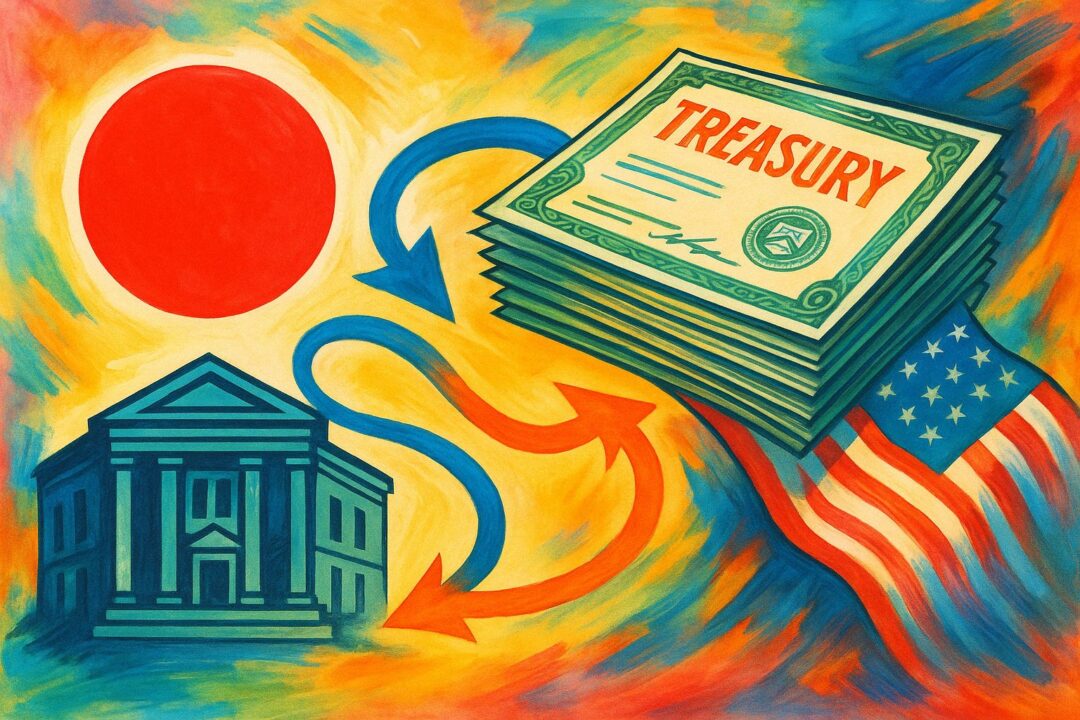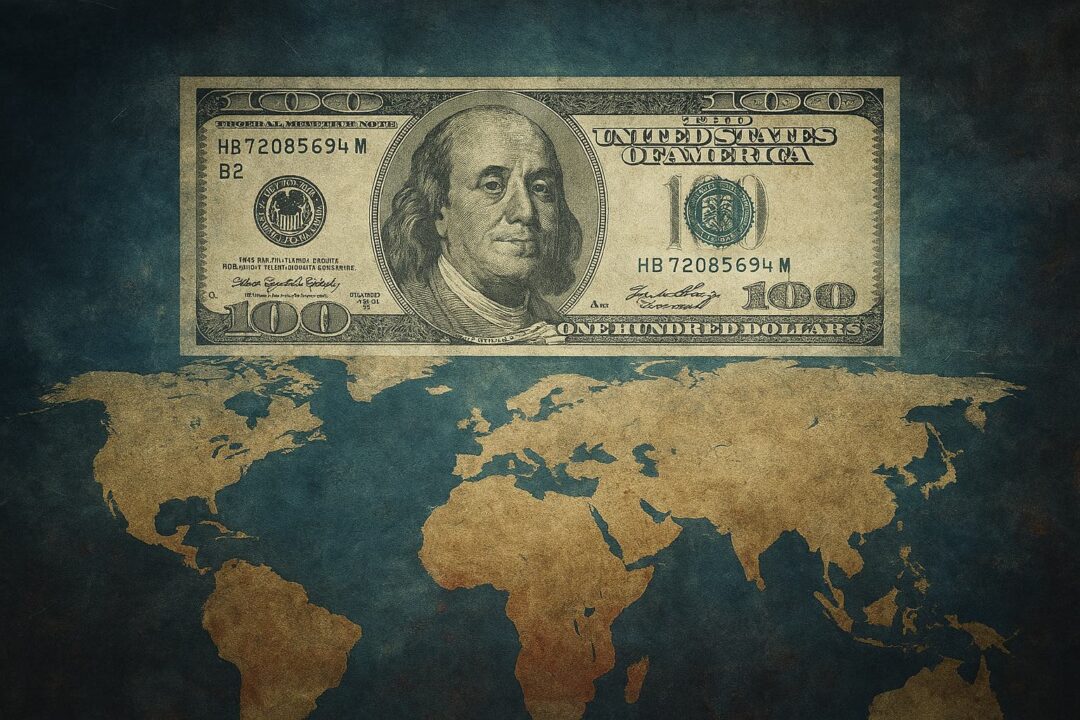Over the past three years, gold’s market capitalization has surged from around $10 trillion to about $23 trillion. That’s an astonishing move for what is typically considered a “slow and steady” store of value.
But what caused this? When I asked ChatGPT, it explained that asset prices don’t rise purely based on new money flowing in. Instead, there’s a multiplier effect — meaning a relatively small amount of real inflows can trigger a much larger market cap increase due to tight supply and strong demand. In gold’s case, the multiplier is likely around 10x.
That means only about $1 trillion of net real money may have fueled the $13 trillion jump in gold’s value.
The bigger question is: what happens next?
If Countries Ditch Treasuries, What Happens?
Historically, U.S. Treasuries have been the go-to “risk-free” asset for central banks, pension funds, and large institutions. But now, with:
- U.S. national debt exceeding $34 trillion (and projected to rise rapidly),
- Rising fiscal deficits,
- Persistent inflation,
- Geopolitical polarization,
— more and more players are questioning whether Treasuries are truly “safe.”
If global central banks — and possibly even private investors — begin to meaningfully reduce their holdings of Treasuries, they will need to park that capital somewhere else. Gold is an obvious alternative.
Previously, I discussed only the foreign holders (central banks, sovereign wealth funds) — but U.S. domestic holders are just as important, if not more.
Americans May Also Ditch Treasuries
Right now, U.S. banks, pension funds, and households hold a massive amount of Treasuries. But if inflation remains sticky, or if trust in U.S. fiscal management erodes further, domestic demand for Treasuries could weaken too.
This would set off a dangerous feedback loop:
- Less demand for Treasuries → higher interest rates to attract buyers.
- Higher rates → even bigger U.S. interest payments (already approaching $1.2 trillion annually).
- Larger deficits → even more debt issuance.
- Even more debt → even more reliance on Federal Reserve monetization (i.e., printing money to buy Treasuries).
- More monetization → higher inflation → lower Treasury confidence further.
This is the classic debt spiral:
Debt drives up interest payments → which drives up deficits → which drives up debt issuance → which drives up monetization → which drives up inflation → which undermines Treasury confidence further.
If this unfolds, demand for real assets like gold could explode — both internationally and inside the United States.
How Big Could the Shift to Gold Be?
Let’s update the numbers to include domestic factors:
- Global central banks and sovereign wealth funds: ~$15 trillion in reserves.
- U.S. private investors, banks, and pension funds: hold many more trillions in Treasuries (domestic holdings ~ $23–24 trillion).
Even a 5–10% reallocation away from Treasuries — foreign and domestic — would involve trillions of dollars.
Suppose:
- $1.5–2 trillion shifts toward gold over a few years.
- Apply the same 10x multiplier (due to limited supply and momentum effects).
- That could mean an increase of $15–20 trillion in gold’s market cap.
That would push gold’s market cap from $23 trillion today to potentially $40–45 trillion — or higher if panic sets in.
Central Banks Are Already Preparing
It’s not just theoretical. Central banks have been aggressively buying gold for two straight years, led by China, Russia, and emerging economies looking to de-dollarize their reserves.
Meanwhile, the Federal Reserve is trapped:
- If it cuts rates to help the economy, it risks inflaming inflation.
- If it raises rates to fight inflation, it risks blowing up the debt.
Either way, gold benefits — whether through inflation, debt monetization, or sovereign default risks.
Conclusion: Gold’s Market Cap Could Rise Much Further
The rise in gold’s market cap from $10 trillion to $23 trillion took only about $1 trillion of real inflows.
If global investors — both foreign and American — begin meaningfully abandoning Treasuries, and if the U.S. enters a full-blown debt spiral, the amount of capital seeking safety in gold could skyrocket.
A move toward a $40–50 trillion gold market cap is not out of the question.
In a world drowning in debt, gold might not just preserve wealth — it might redefine it.
Discover more from Brin Wilson...
Subscribe to get the latest posts sent to your email.



